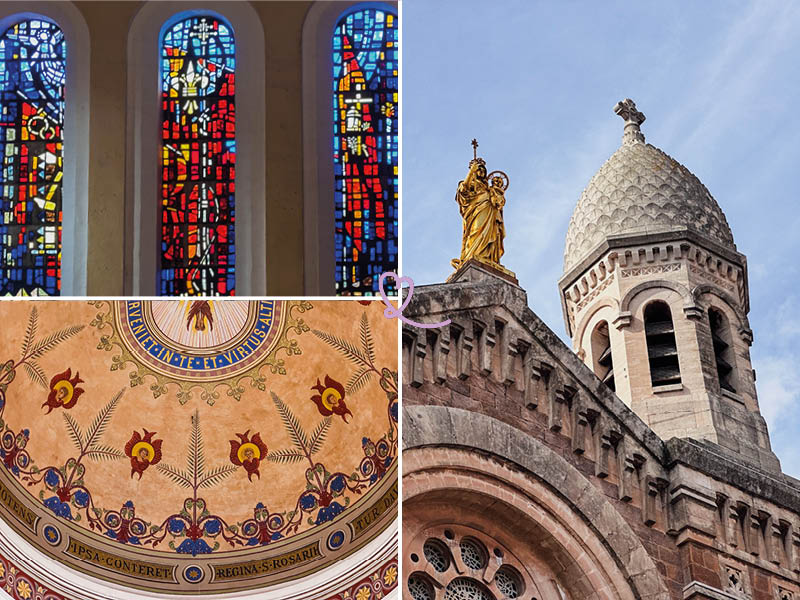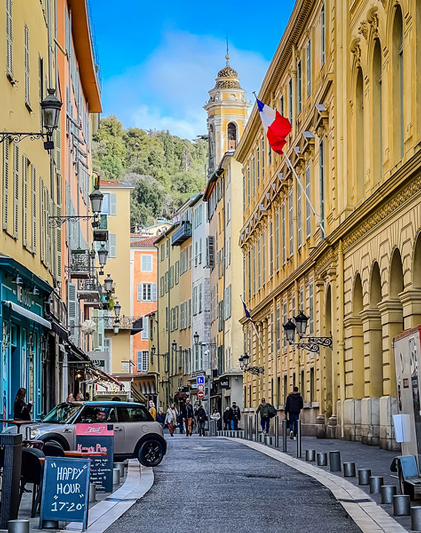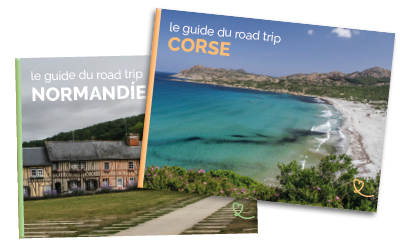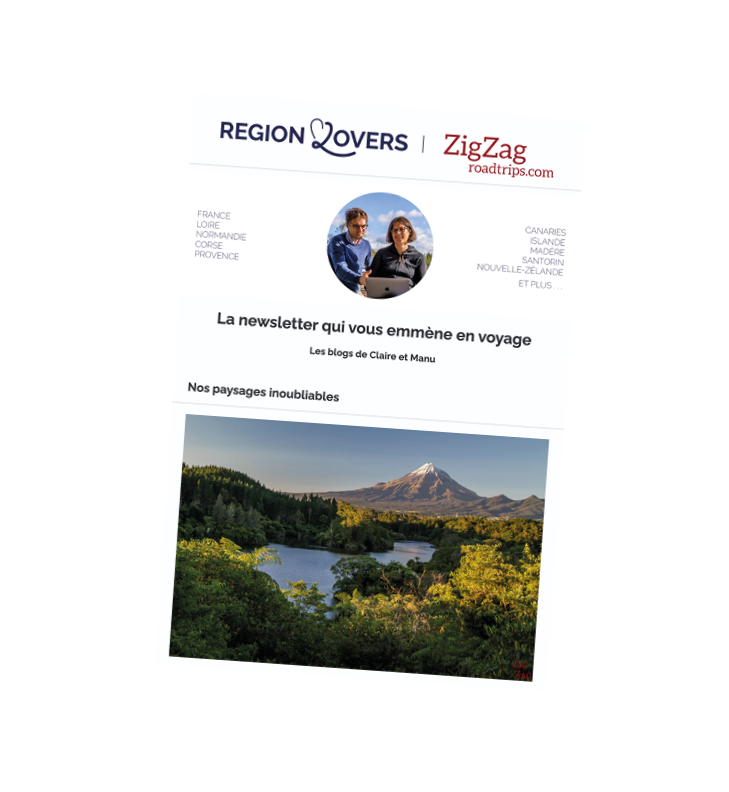Visiting Saint-Raphaël? We suggest a stopover to visit the Basilique Notre-Dame-de-la-Victoire! One of only two basilicas on the Côte d’Azur.
We enjoyed discovering this singular religious building. A skilful blend of neo-Byzantine architectural influence, French materials and craftsmanship. Its colorful stained glass windows, mosaics, large fresco and presence in the Saint-Raphaël urban landscape impressed us.
In this article, you’ll find a wealth of useful tips and photos to help you prepare for your visit. Find out more about the Basilique Notre-Dame-de-la-Victoire and the history of Saint-Raphaël!

This guide is completely independent, based on our experiences. We visited the region anonymously, making our own choices and paying our bills in full.
Why visit the Basilica of Notre-Dame-de-la-Victoire?
Why is the Basilica of Saint-Raphaël worth a visit? Our opinion:
Yes, we think the Basilica of Notre-Dame-de-la-Victoire is well worth a visit.
Built at the end of the 19th century, we found this basilica as beautiful on the outside as it is on the inside. It is a remarkable example of neo-Byzantine architecture. This architectural style, inspired byByzantine architecture of the Middle Ages, is characterized by domes, thick walls and rich decorations. It is reminiscent of the Basilica of Saint Sophia in Istanbul.

Partly built of pink Esterel sandstone, we loved the interior of the basilica. It’s vast, with colourful stained glass windows , and we found its 25-metre diameter dome quite remarkable! The basilica covers a total surface area of 850 m², reaching a height of 35 m. The façade features a representation of the Archangel Raphael, symbol of the town of Saint-Raphaël.
If you’re passing through Saint-Raphaël, we recommend you take the time to visit this building. In our opinion, it’s one of the must-sees in the seaside town (article to come).

Why is Notre-Dame-de-la-Victoire Basilica famous?
The Basilique Notre-Dame-de-la-Victoire is an original work of art. It was designed by architect Pierre Aublé, who combined elements of the neo-Byzantine style with more modern touches. For example, the basilica’s dome is a cast-iron structure, a technique that was not common at the time. We were pleasantly surprised by these unconventional details.
It is one of only two basilicas in the Fréjus-Toulon diocese. We therefore recommend that you spend a few minutes there during your visit to Saint-Raphaël.

Our favorite moments
We were lucky enough to visit the basilica on a sunny day. The stained glass windows offered a veritable symphony of colors, blending warm and cool tones.
We also really enjoyed observing the ceiling fresco: majestic, colorful and full of flowers. There are many elements and details to be carefully analyzed.
We found this church very interesting to visit. Indeed, it stands out for the richness of its scenery, the details of which we were delighted to observe. Its unusual architecture took us by surprise.

WHERE TO STAY IN Saint-Raphaël
Option 1 : downtown and beaches of Saint-Raphaël and Fréjus
Enjoy the charm of the towns and all the restaurants.
We recommend..:
- Hotel Unique – see prices, photos and availability
- Hotel Le Touring – prices, pictures and availability

Option 2: Along the coast to Esterel
By the sea, luxury hotels near the red rocks of the Esterel. We recommend..:
- Hotel La Villa Mauresque – prices, pictures and availability
- Hotel Les Roches Rouges – prices, pictures and availability

Option 3: in the countryside
For more peace and quiet, enjoy the sea or the countryside, but still close enough to the city. We recommend..:
- Hotel Le Confidentiel – prices, pictures and availability
- Hotel la Bastide du Clos des Roses – see prices, pictures and availability

History in brief
Built at the end of the 19th century, the Basilique Notre-Dame-de-la-Victoire bears witness to the successful transformation of Saint-Raphaël at that time. We learned that the town’s rapid growth meant that the old San Rafeu church was insufficient to accommodate the growing population.
The design of the new place of worship was entrusted to architect Pierre Aublé, who was passionate about the Byzantine-Moorish style.
Inaugurated in 1887, we learned that the church was dedicated to Our Lady of Victory in memory of a famous sea battle in which Christian forces routed the Ottoman fleet on October 5, 1571.

The Vatican elevated Notre-Dame-de-la-Victoire to the rank of basilica in 2004, making it the second basilica in the Fréjus-Toulon diocese alongside Saint-Maximin.
We are convinced that the Basilica is today an important historical and cultural monument, contributing to the richness of the town of Saint-Raphaël.

Access: Basilica of Saint-Raphaël
Where is Notre-Dame-de-la-Victoire Basilica?
- In downtown Saint-Raphaël
- Rue Jean Aicard
- Close to the old port and Plage du Veillat
OUR TPS FOR RENTING YOUR CAR IN Provence
- Compare prices on our preferred platform: DiscoverCars – one of the best rated sites.
- Choose a car that is powerful enough (the roads are steep) but compact (some passages are narrow).
- Think of thecomplete insurance (some roads are tortuous and narrow).
- There is a lot of demand, book it early.

How to get there?
It’s easy to get around on foot. As the city is not very large, this is relatively easy and convenient. We think it’s the best way to discover the resort and its jewels.
Alternatively, the Estérel Côte d’Azur bus network can take you to Saint-Raphaël and surrounding towns (Fréjus, Puget-sur-Argens, Roquebrune-sur-Argens). Find out more here.
- By train: the basilica is a 5-minute walk from the SNCF train station.
- By bus: Line 21 stop “Bonaparte – Casino – St-Raphaël” on the Esterel Côte d’Azur network
- By car: 1h10 from Nice or Toulon; 45min from Antibes.
In Saint-Raphaël, it’s easy to get around by car. It’s the best way to reach the surrounding beaches and visit nearby towns and points of interest.

Parking
If you wish to reach the Basilica by car, you can park in the Bonaparte underground parking lot, just a 2-minute walk away.
PLAN YOUR STAY IN Saint-Raphaël

Useful tips: duration, schedules, eating…
Best time to visit Notre-Dame-de-la-Victoire Basilica
The Basilica of Saint-Raphaël is rarely crowded outside of religious events. So it’s easy to visit whenever you like. However, we advise you to avoid funerals, weddings and christenings.
However, for a more unique experience, here are the moments we recommend:
- on a sunny day, when the sun shines through the stained glass windows, revealing their artistic details and creating a warm, colorful atmosphere inside the building.
- in December, when its façade is illuminated by light projections. A magical show that highlights the beauty of the Basilica, usually on view every evening in December, from 7pm.
Before your visit, check out Saint-Raphaël’s festivities calendar here. - outside the summer period to avoid the influx of visitors and the heat.
If you’d like to avoid religious services during your visit, check the mass times here.

Length of visit and main difficulties
It takes between 10 and 30 minutes to explore the Basilica of Notre-Dame-de-la-Victoire. You’ll be able to take a close look at the facades, appreciate the stained glass windows, admire the majestic dome and admire the mosaics.
For the mobility-impaired, please note that access via an inclined ramp is available. It is located on the right-hand side of the building, rue Aublé.

A LITTLE MORE patience
All the photos, maps, information, good addresses to make your stay in Provence a success, will soon be gathered in a single ebook!
If you wish to be informed of the publication of our guide on Provence, subscribe:

Schedules and rates
Entrance to and tours of the basilica are free of charge.
The basilica is open all year round at the following times:
- Monday, Thursday and Friday: 6am – 7pm
- Tuesday and Wednesday: 6am – 7.30pm
- Saturday and Sunday: 6am – 8pm
Catering
As the basilica is in the center of Saint-Raphaël, there are plenty of restaurants to choose from.
Here are our favorites near the basilica:
- Restaurant Clos Séméria: a gourmet restaurant offering elaborate, inventive cuisine using produce from small-scale producers and local merchants. Perfect to end the day on a high note.
- Restaurant Le jardin de Sébastien: Fine traditional cuisine with Mediterranean accents in a villa with terrace and wooded garden. A cool, calm interlude away from the seaside, surrounded by greenery.
- Restaurant Chez Lana: Asian fusion cuisine with homemade dishes based on local vegetables and fresh meat. Lana’s speciality is egg rolls, available in all shapes and sizes: savoury, sweet, vegetarian, carni… Perfect for lunch.
For more choice, check out our article on the city’s best restaurants (coming soon).

The tour begins: Raphael, protector of the city
Stand on the square in front of the basilica, facing the porch, and look up.
You’ll see a blue coat of arms in paint: it’s the town’s coat of arms. Two figures are depicted. The greatest is the archangel Raphael, the second, Tobias.

This representation comes from the legend of Tobie, which we discovered during our visit. It tells the story of a young man sent by his blind father to collect money. Accompanied by the archangel Raphael (then disguised as a man), he meets a young woman tormented by a demon who has killed her 7 previous husbands. With Raphael’s help, Tobias drives out the demon, marries Sarah and cures his father of blindness. This story emphasizes faith, divine protection and the importance of family. Find out more here.
In studying the history of the commune of Saint-Raphaël, we discovered that its name seems to derive from a Romanesque church dedicated to the archangel Raphaël, built in 1065 on the episcopal estate of Fréjus. This church became the center of a fortified village, the castrum, first mentioned in 1073 as Sanctus Raphaël.

The exterior: the basilica’s jewel case
Before entering the building, take time to look around the exterior. You’ll be amazed by the beauty and richness of the architectural details.
The front facade: Byzantine brilliance
The basilica’s front façade is the first thing we notice.
The neo-Byzantine style is not widespread in France, and this building is a typical example. So we really enjoyed his visit.

You can see that the central portal (entrance) is topped by a large rose window. It covers a circular stained glass window that can be seen inside the building. A delicate, poetic detail reminiscent of lacework.
The façade is surmounted by a gilded statue of the Virgin Mary known as the “Virgin and Child in Majesty”. If you visit the basilica on a sunny day, you’ll have the chance to see it shine with the sun’s rays.

Finally, at the ends, you can see two stone columns (made of porphyry from Dramont, a magmatic rock) decorated with stone scales and topped with crosses.
They give the basilica a majestic, solid appearance. Symbolically, this may refer to the solidity and longevity of the Christian religion.
Estérel pink sandstone: a local material
Have you noticed the color of the basilica’s walls?
They are built of pink Estérel sandstone. A natural (sedimentary) rock about 30 million years old. It is found in the Estérel mountains near Saint-Raphaël. This material has been used for building construction since Antiquity.
An architectural detail we found remarkable. It gives the basilica a unique appearance, setting it apart from other churches in the region.
Secondary elements (chains, window voussoirs, cornices, bell towers, nave pillars, etc.) are in white limestone.

The cupola: queen among villas
The dome of the Basilica of Notre-Dame-de-la-Victoire is the element we found most emblematic. Measuring 35 meters high and 25 meters in diameter, it is covered with slate and a mosaic-like frieze of yellow and black tiles. We found it very pretty and atypical. It is visible from afar and dominates the urban landscape of Saint-Raphaël.

Subscribe to our Newsletter
- Get away from it all with Region Lovers’ beautiful destinations!
- Once a month
- Advertising-free
Inside: the soul of the basilica
We invite you to discover the interior of the basilica. The stained glass windows, the fresco, the organ… all combine to create an enchanting atmosphere.
Let your curiosity be your guide and let’s explore this unique place together.
The stained glass windows: a symphony of blue and gold
We really enjoyed the show put on by the sun shining through the basilica’s stained glass windows, creating a warm, colorful and enchanting atmosphere. The sun’s rays, filtered through the stained glass windows, create a striking play of light and color.

Made by glassmakers in Chartres, in 1978 they replaced the original stained-glass windows, which were badly damaged at the time.
If you’d like to decipher them, here are a few clues: the stained-glass windows in the upper part of the nave depict mystical symbols, while those below feature figurative subjects.
The angel who watches over the basilica
The ceiling of the rounded area at the back of the basilica’s choir (the cul-de-four of the choir) is entirely covered with a fresco depicting an angel.

Did you notice that the angel has six wings ? That’s because he’s a seraph. Around him is an inscription in Latin meaning “The Holy Spirit will come upon you and the power of the Most High God will cover you.” The angel is surrounded by angel heads on a gilded background, themselves surrounded by wings.
We also really liked the stylized flowers underneath. Finally, at the edges, the band features an inscription of the Litany of the Virgin Mary.

If you look down, you’ll notice mosaic daisies on the floor of the nave. We really liked this detail, which seemed to echo the painting on the ceiling, like a mirror.
The 43-stop organ
Before leaving the basilica, take a look at the organ. The one you see is not original, but was inaugurated in 1988. At the time, it was the largest new organ ever built by Manufacture Provençale d’Orgues. In fact, it features 43 games on 3 keyboards.

We weren’t so lucky, but if you visit Saint-Raphaël during the summer months, you may be able to attend an organ concert. During the Festival International de l’orgue en Provence-Alpes-Côte-d’Azur, concerts are held in the basilica. The festival is held throughout the region every year in July and August, and the organ in the Basilica of Notre-Dame-de-la-Victoire is one of the most important in the Var.
PLAN YOUR TRIP TO THE Côte d’Azur
- Inspiration
The most beautiful landscapes in 30 photos
Best things to do on the Côte d’Azur
Most beautiful villages
Best beaches on the Côte d’Azur
Most beautiful gardens
Best boat tours (coming soon)
Most beautiful islands
Secret places

- Practical advice
Successful travel on the Côte d’Azur (coming soon)
Rent a car in Provence – in Nice – in Cannes – in Marseille – in Aix-en-Provence.
Itineraries: 5 days – 1 week – 10 days
Weekend ideas: best-of – romantic – luxury – unusual

- Where to stay
Where to stay on the Côte d’Azur
Best luxury hotels on the Côte d’Azur
Hotels by the sea
Best boutique-hotels






